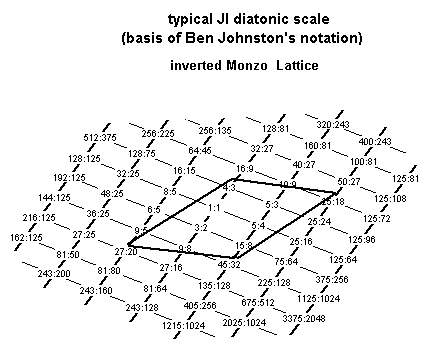The system of notating rational intervals devised by Ben Johnston. It evolved from the 1960s to the 1980s.
It is based on the regular 5-limit JI diatonic major scale, represented by the seven letter-names A B C D E F G.

The symbols # and b represent an alteration of intonation by the ratio 25:24 [= ~70.67 cents], plus or minus respectively.
The symbols + and - represent an alteration of intonation by the ratio 81:80 [= ~21.506 cents], the syntonic comma.
Each additional accidental in Johnston's system represents an intonational inflection resulting from the incorporation of additional prime-factors in the ratio of a given pitch.
Johnston uses arrows pointing up or down to represent the presence of prime-factor 11, and for all higher primes he simply uses the prime number itself for the otonal adjustment and the prime number inverted for the utonal adjustment.
My own opinion is that Johnston's notational idea could be improved by using a Pythagorean scale instead of a 5-limit one as a basis. See HEWM, and my essay JustMusic Prime-Factor Notation.
I've created a Microsoft ExcelTM spreadsheet which allows the user to convert individual pitch-classes from a large subset of Ben Johnston's notational system into HEWM: http://www.ixpres.com/interval/monzo/johnston/johnston-hewm.xls.
REFERENCE
For a detailed explanation of Johnston's notation, see:
Fonville, John. 1991.
Ben Johnston's Extended Just Intonation: A Guide for Interpreters.
Perspectives of New Music, vol 29, no 2 [Summer], p 106-137.
[from Joe Monzo, JustMusic: A New Harmony]
updated: 2002.3.9, 2002.2.15